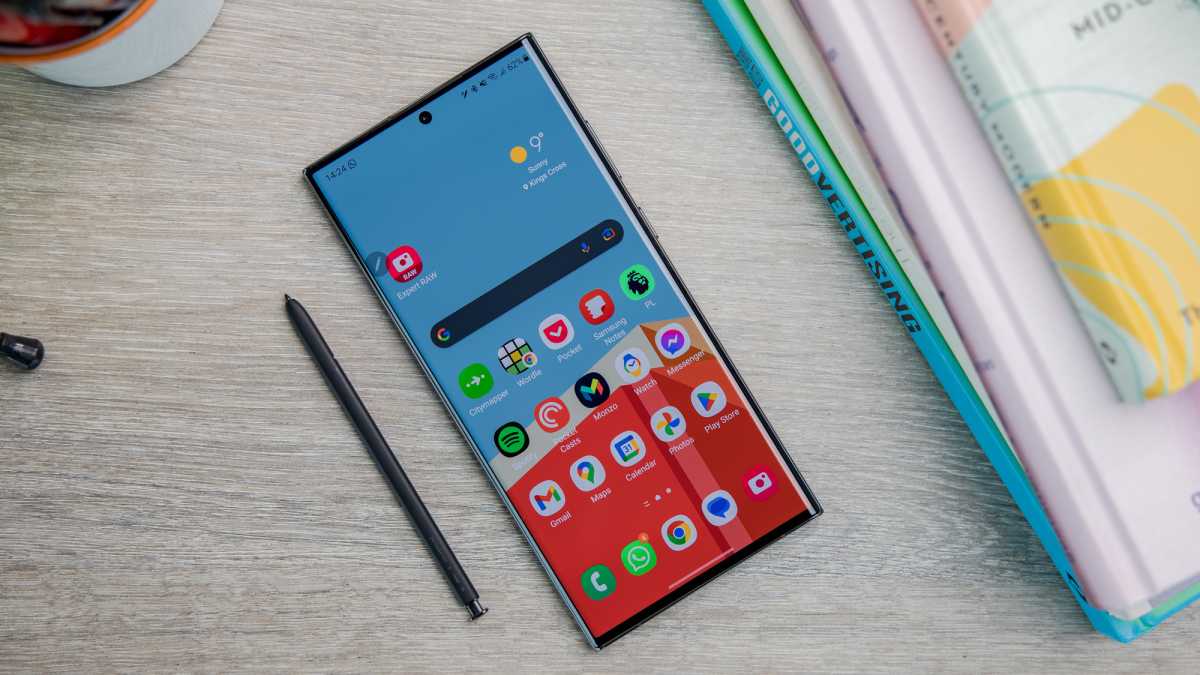The Samsung Galaxy S23 Ultra is the best performing Samsung phone I’ve ever used. That is partly down to the Snapdragon 8 Gen 2 for Galaxy chipset.
As a UK-based tech journalist, I’ve only ever been able to buy or review Galaxy phones with Samsung’s Exynos chipsets in them as the UK has always been marked as an Exynos region, whereas many other countries get Qualcomm Snapdragon chips instead.
The Galaxy S23 series is the first ever where Samsung has globally shipped every model to every region with Snapdragon inside.
Won-Joon Choi, Samsung’s Executive Vice President, Mobile R&D, told me at Mobile World Congress last month in Barcelona that might not be the case permanently.
“There are many considerations to take into account including the performance or power efficiency, different telecom requirements, and different regional requirements,” he said of Samsung’s process of choosing chips for its S series phones.
“This year after another rigorous evaluation, we decided that Snapdragon would be the best chipset to provide the optimum Galaxy user experience for this particular series. This is the process we have been adopting for many years, and it will continue to be our process down the road.”
He agreed it was possible that next year the Galaxy S24 series could use an Exynos chipset in some regions.
What I know for now is just how good the S23 series phones are. We’ve reviewed all three, and the S23 Ultra in particular impressed me as one of the best phones available with its zippy performance that’s light years away from memories of my beautiful but TouchWiz-afflicted Galaxy S6 in 2015.

Dominik Tomaszewski / Foundry
“Our major theme when we started planning for the S23 series was ‘back to fundamentals’ and one of the most important aspects of fundamentals is performance, because that defines a lot of use cases and basic experience that our customers will see,” Choi said.
New to the S23 series is an AI-based system algorithm the company has been working on for years. It’s designed to help the phones’ software better manage the hardware resources, and Samsung has worked “very closely” with Google to optimise One UI, Choi said.
The version of the Snapdragon 8 Gen 2 in every Galaxy S23 is specifically ‘for Galaxy’ and has a maximum single-core clock speed higher than an 8 Gen 2 chip in another phone such as the OnePlus 11.
Multi-core speeds are often measured by companies to show the highest possible power a phone can eke out for high-level gaming, but Choi said it’s the single-core performance that helps give the S23s their noticeably better responsiveness.
“For single-core performance, it’s more of a time-critical kind of action … how fast the system can respond.”
I found One UI and flicking between apps noticeably snappier on the S23 compared to the Galaxy S22 Ultra or Galaxy Z Fold 3. Now I know to thank the single-core clock speed and the new AI-powered algorithm.
“Rather than looking at our algorithm as application-specific, it’s more user scenario-specific, so it optimises the system resource management utilisation based on the different user scenarios and adapts across all of them,” Choi said.
“Eventually our goal is to have [the algorithm] across all of our Galaxy devices. But of course, different series have different capabilities so it will take time to test and propagate this.”

Dominik Tomaszewski / Foundry
When I saw Choi had a Galaxy Z Flip 4 on the table in front of him, I asked him what the biggest challenge was for Samsung as it designs new smartphones over the next few years.
He made the distinction between the company’s candybar-style phones like the S23 series and its foldables such as the Galaxy Z Fold 4.
“Because the form factor for bar-type phones has matured so much to this level, now, even if we introduce a new design after a lot of hard work, consumers say they don’t really notice a big difference.
“So, our challenge becomes how do we introduce a new experience and a new design in the bar type category?”
When it comes to foldables, he said Samsung could improve the hinge, display, weight, and durability to deliver a more “complete form” of folding phone, changes I hope to see in the Galaxy Z Fold 5 and Z Flip 5 later this year.
But Samsung is aiming for you to use more of its products than just the phone in your pocket.
“We should no longer look at the bar-type phone as just a smartphone on its own. I think our next innovation, our next experience is multi-device,” Choi said.
“So, you need to understand how you can use your smartphone with other devices and other accessories like watches, buds, laptop, tablet, because the multi device experience is definitely going to be richer.”
Samsung is a clear leader in smartphones when you look at global sales, and it has set the benchmark for foldables by being first to market in Europe and the US. But the design changes between the Z Fold 3 and Z Fold 4 were extremely minimal, and a recent folding rival to the Z Flip series, the Oppo Find N2 Flip, has a more larger outer display and a design that folds completely flat.
Samsung has the marketing might, but it knows it needs to improve its market-leading foldables if it is to sell more units of the emerging category. With the performance gains on the S23 series, it’s good to see it is also still working on how to improve its S series phones, despite admission of the design stagnation.


